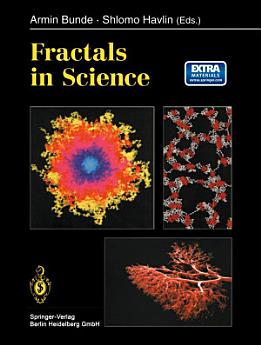Fractals in Science
Armin Bunde · Shlomo Havlin
дец 2013. · Springer
E-knjiga
300
Stranica
reportOcene i recenzije nisu verifikovane Saznajte više
O ovoj e-knjizi
Applying fractal geometry to science is bringing about a breakthrough in our understanding of complex systems in nature that show self-similar or self-affine features. Self-similar and self-affine processes appear everywhere in nature, in galaxies and landscapes, in earthquakes and geological cracks, in aggregates and colloids, in rough surfaces and interfaces, in glassy materials and polymers, in proteins as well as in other large molecules. Fractal structures appear also in the human body; well known examples include the lung and the vascular system. Furthermore, fractal geometry is an important tool in the analysis of phenomena as diverse as rhythms in music melodies and in the human heart beat and DNA sequences. Since the pioneering work of B.B. Mandelbrot, this interdisciplinary field has expanded very rapidly. The scientific community applying fractal concepts is very broad and ranges from astronomers, geoscientists, physicists, chemists and engineers to biologists and those engaging in medical research.
Ocenite ovu e-knjigu
Javite nam svoje mišljenje.
Informacije o čitanju
Pametni telefoni i tableti
Instalirajte aplikaciju Google Play knjige za Android i iPad/iPhone. Automatski se sinhronizuje sa nalogom i omogućava vam da čitate onlajn i oflajn gde god da se nalazite.
Laptopovi i računari
Možete da slušate audio-knjige kupljene na Google Play-u pomoću veb-pregledača na računaru.
E-čitači i drugi uređaji
Da biste čitali na uređajima koje koriste e-mastilo, kao što su Kobo e-čitači, treba da preuzmete fajl i prenesete ga na uređaj. Pratite detaljna uputstva iz centra za pomoć da biste preneli fajlove u podržane e-čitače.






